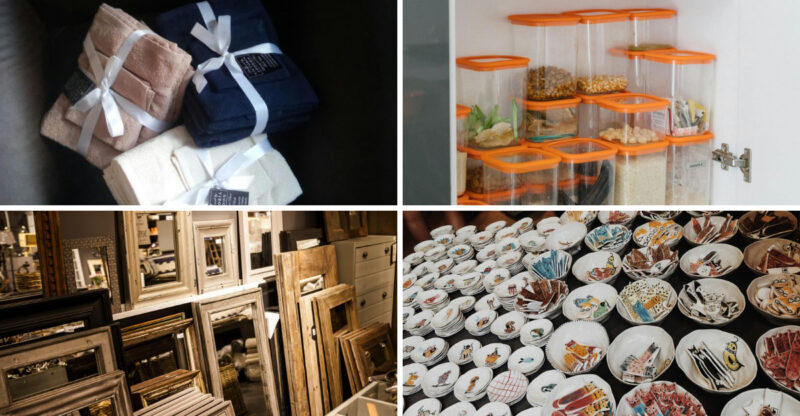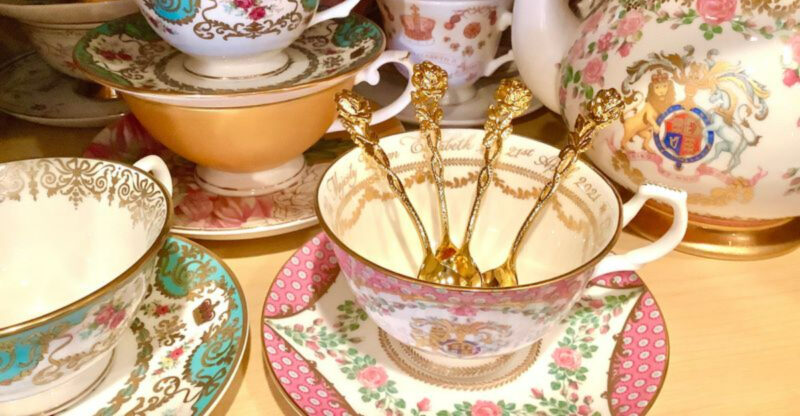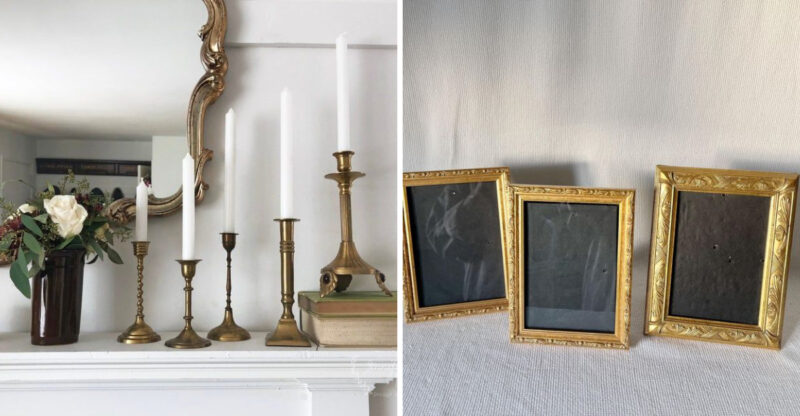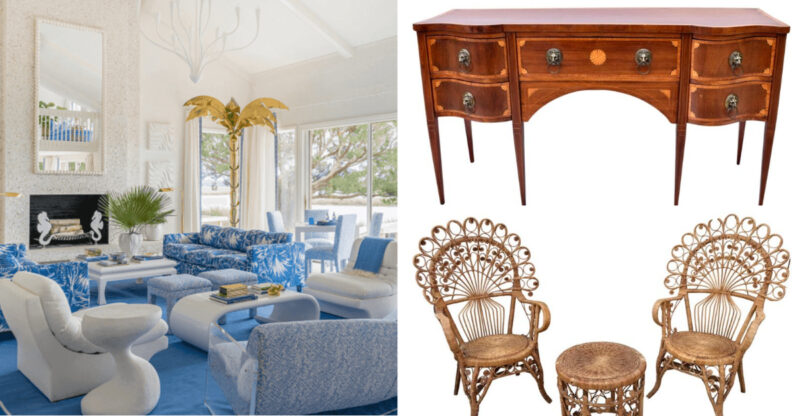12 Once-Priceless California Collectibles Now Losing Their Shine, And 8 To Skip
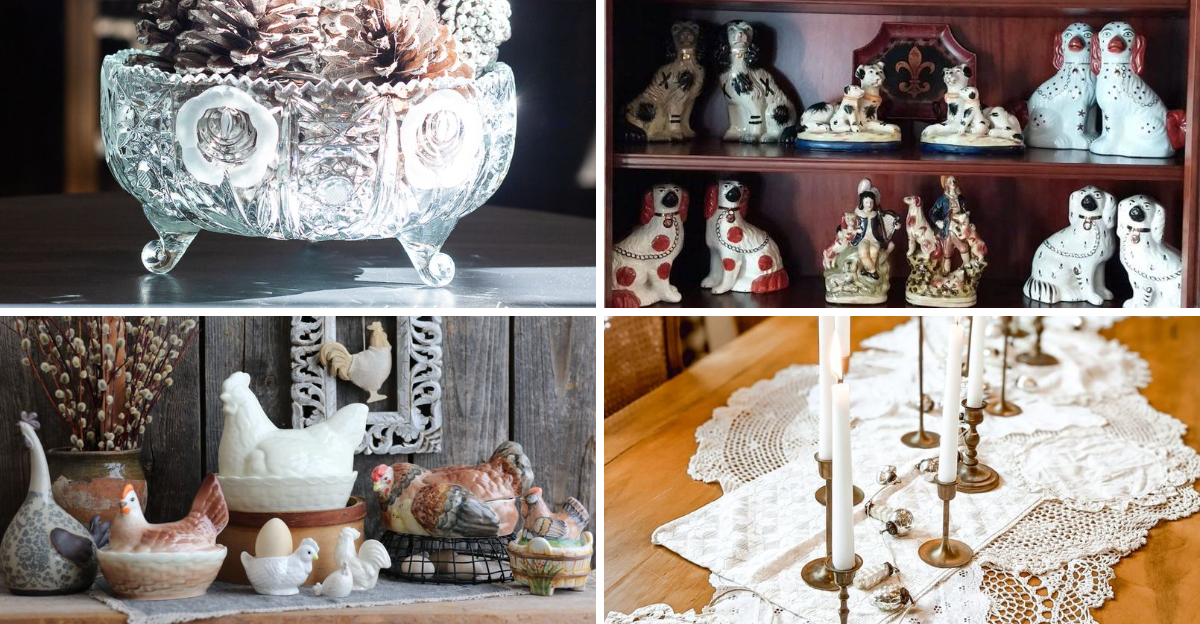
California has always been a trendsetter, but not every vintage treasure holds its value forever. Some collectibles that once commanded top dollar at estate sales are now gathering dust in thrift stores.
I’m breaking down which California classics are fading fast and which ones you should leave on the shelf entirely.
1. Mid-Century Modern Teak Furniture
Teak pieces were once the crown jewels of California estate sales. Collectors would fight over sleek sideboards and minimalist chairs. Now the market is flooded with similar designs from mass retailers.
Younger buyers prefer lighter woods or painted finishes these days. Storage space is also a major issue in California apartments. Heavy teak credenzas just don’t fit modern lifestyles anymore.
If you inherited grandma’s teak collection, selling might prove disappointing. The golden age of mid-century mania has cooled considerably.
2. Hollywood Regency Mirrors And Consoles
Golden frames and dramatic flair defined Hollywood Regency style perfectly. These glamorous pieces screamed old California luxury and sophistication. But today’s minimalist trends have left them looking overly fancy.
Most buyers now want simple, clean lines instead of ornate details. The shiny gold finishes feel dated rather than elegant. Even interior designers are moving away from this look.
You’ll struggle to find buyers willing to pay what these once commanded. The regency reign has definitely ended in California homes.
3. California Pottery (Bauer, Metlox, Vernonware)
Bauer’s ring bowls and Metlox dinnerware were California kitchen staples. Collectors paid premium prices for complete sets in rare colors. However, the pottery bubble has burst in recent years.
Chips and cracks are common problems with vintage ceramics. Younger generations prefer dishwasher-safe modern options instead. The nostalgia factor just isn’t strong enough anymore.
Unless you have pristine, rare pieces, expect modest returns. California pottery has lost much of its collectible appeal.
4. Rattan And Wicker Patio Sets
Coastal California homes once showcased beautiful rattan patio furniture everywhere. The natural woven look felt breezy and relaxed. But weather damage and changing tastes have diminished their value.
Outdoor furniture takes a beating from the California sun and salt air. Rattan dries out and splits over time. Modern synthetic options last longer and cost less.
Finding buyers for vintage wicker is increasingly difficult. The repair costs often exceed the furniture’s current worth. Beach vibes now come from different materials entirely.
5. Vintage Pyrex Mixing Bowls
Colorful Pyrex bowls were kitchen essentials for California homemakers. Primary colors and geometric patterns made them instantly recognizable. The vintage Pyrex craze peaked several years ago.
Nowadays, thrift stores overflow with these once-coveted bowls. Everyone’s grandmother had a set, so they’re not rare. Modern glass bowls work just as well for less money.
Unless you have extremely rare patterns, don’t expect big payouts. The Pyrex market has cooled significantly across California.
6. Shabby Chic Distressed Dressers
Distressed white furniture dominated California design blogs for years. People paid craftsmen to make new pieces look old. That farmhouse aesthetic has finally run its course.
Clean, modern furniture is back in style now. The deliberately worn look feels overdone and tired. Plus, quality varies wildly with painted vintage pieces.
Selling shabby chic furniture takes forever in today’s market. Most buyers scroll right past these listings. The cottage core trend couldn’t save this style either.
7. Pressed Glass Serving Dishes
Grandma’s pressed glass collection sparkled on every California holiday table. Intricate patterns caught the light beautifully during dinner parties. But formal entertaining has become much more casual.
These dishes are fragile and chip easily when stacked. Most people use everyday dishes for gatherings now. The elaborate patterns also look fussy to modern eyes.
Storage space is too valuable for single-use serving pieces. Pressed glass sits unsold at estate sales everywhere. Sentimental value exceeds actual market value significantly.
8. Avocado-Green Kitchenware
Avocado green appliances defined 1970s California kitchens completely. Matching blenders, toasters, and canisters created coordinated color schemes. That harvest gold era feels painfully dated now.
Nobody wants an avocado green refrigerator taking up space. The color clashes with contemporary kitchen palettes. Even ironic retro lovers have moved past this look.
You might get a few dollars for small items. Large appliances will likely head straight to recycling. This color trend won’t be making a comeback.
9. Ornate China Cabinets
Massive china cabinets anchored California dining rooms for generations. They displayed precious dish collections behind glass doors. But open shelving and minimalism have made them obsolete.
These cabinets are incredibly heavy and difficult to move. Most apartments can’t accommodate such large furniture pieces. Younger buyers don’t collect formal china anymore either.
Giving these away proves challenging, let alone selling them. The wood might be beautiful, but practicality wins. Storage needs have completely changed in modern homes.
10. Heavy Oak Dining Sets (1980s–90s)
Solid oak dining sets were investment pieces in California suburbs. Parents bought them expecting they’d last forever. That durability actually became a problem for resale.
These sets are still everywhere because they never wear out. The market is completely saturated with identical tables. Plus, they’re too heavy for most people to transport.
Formal dining rooms are disappearing from home designs anyway. Kitchen islands serve as gathering spots now. Your oak set might end up donated or discarded.
11. Ceramic Figurines And Knickknacks
California curio cabinets once overflowed with tiny ceramic treasures. People collected figurines from every vacation and special occasion. But clutter-free living has made these feel unnecessary.
Dusting hundreds of little objects drives modern homeowners crazy. Marie Kondo convinced everyone to purge decorative items. The sentimental value doesn’t transfer to new owners.
Thrift stores can barely give these away anymore. Even rare figurines struggle to find buyers. The knickknack era has definitely ended completely.
12. Crystal Stemware And Decanters
Fine crystal represented elegance at California dinner parties. Wedding registries always included stemware and fancy decanters. But casual entertaining has made these feel stuffy.
Hand-washing delicate crystal is too much work for most. People prefer durable, dishwasher-safe glassware instead. The formal dining tradition has faded significantly.
Complete sets rarely stay together through the years anyway. Broken stems reduce value to almost nothing. Your grandmother’s crystal probably won’t pay for much.
13. Silver-Plated Flatware Sets
Skip these tarnished treasures without a second thought. Silver-plated flatware requires constant polishing to look decent. Most pieces aren’t even real silver underneath.
The plating wears off with use, revealing the base metal. Stainless steel performs better and needs zero maintenance. Nobody wants to spend hours polishing spoons anymore.
Resale value is practically nonexistent for plated silver. Even antique dealers turn these away regularly. Save your energy and pass these by.
14. Formal China Sets
Leave grandma’s formal china for someone else to handle. Complete sets take up enormous amounts of storage space. Using them requires hand-washing each delicate piece carefully.
Modern families eat casually and value convenience over formality. The patterns often look outdated and overly fussy. Replacement pieces are impossible to find for discontinued patterns.
Selling china is frustratingly difficult in today’s market. Donation centers often refuse to accept them. Your cabinet space is worth more than these dishes.
15. Doilies And Lace Table Runners
Skip these dusty lace remnants from bygone eras. Doilies represent a decorating style that feels incredibly outdated. They collect dust and require delicate hand-washing.
Modern tables look better bare or with simple placemats. The fussy Victorian aesthetic doesn’t match contemporary homes. Even craft enthusiasts rarely want vintage lace anymore.
These items have virtually no resale value whatsoever. Thrift stores overflow with unwanted doilies already. Leave them behind and save your table surfaces.
16. Tuscan-Style Wall Décor
Skip the fake grapes and Italian villa fantasies. Tuscan décor dominated California kitchens for too long. Those terra cotta colors and vineyard themes feel tired now.
The trend was everywhere in the early 2000s. Now it screams dated design choices. Wall plaques with Italian phrases don’t add charm anymore.
This style has become a decorating joke online. Buyers actively avoid homes with Tuscan kitchens. Leave these items for the next donation bin.
17. Ceramic Rooster Kitchen Décor
Skip the farmhouse fowl cluttering up kitchen counters. Ceramic roosters were everywhere during the country kitchen craze. That barnyard aesthetic has finally run its course.
These decorative birds serve absolutely no practical purpose. They just take up valuable counter space. The look feels kitschy rather than charming now.
Rooster collections are donation box regulars at thrift stores. Nobody under fifty wants these in their kitchen. Let these birds stay in the past permanently.
18. Overly Ornate Chandeliers
Skip the sparkly ceiling monsters taking up visual space. Massive chandeliers with dangling crystals feel overwhelming in homes. Modern lighting emphasizes simplicity and function instead.
These fixtures are nightmares to clean and maintain. Replacing bulbs requires ladders and patience. The ornate style clashes with contemporary interiors.
Installation and removal costs exceed their actual value. Most electricians groan when they see these. Simple pendant lights work better for today’s spaces.
19. Decorative Fruit Bowls And Centerpieces
Skip the fake fruit gathering dust on tables. Decorative bowls with artificial produce look silly now. Real fruit or empty bowls make more sense.
These centerpieces serve no actual function whatsoever. They’re just another thing to move when eating. The plastic fruit fades and looks increasingly fake.
Minimalist tables are the preference for modern homes. Cluttered centerpieces interrupt conversation and dining. Leave these relics in the store where you find them.
20. Vintage Plastic Tupperware Sets
Skip the stained plastic containers from decades past. Vintage Tupperware might have lifetime warranties, but who cares. The plastic absorbs odors and stains permanently.
Modern food storage options are vastly superior. Glass containers are healthier and more attractive. Old plastic can leach chemicals into your food.
These sets aren’t valuable despite what sellers claim. The nostalgia factor isn’t worth the storage space. Fresh, new containers are better investments entirely.


